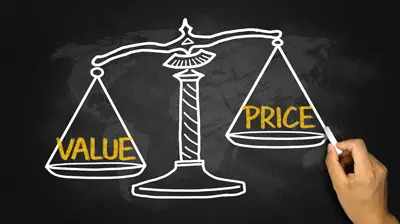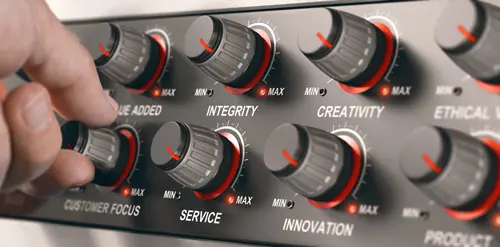
How to Price Your Product Correctly
I stumbled across a very interesting question the other day. Have you ever asked your paying customers how much your product is worth to them? It's interesting because according to one person's experience, the majority of people will tell you that the product is worth more than what they're paying for it. Which would be great, but while that means you're offering great value, you're also leaving money on the table. If you're an ecommerce store, it's important to focus on the Value that is provided by your product and not just its price. Once you really understand the difference between Price and Value, you'll start to price your products correctly.
Many entrepreneurs constantly sell themselves short. Heck, I'm a victim of it myself because I love to give away my knowledge for free. So, let's go over some ground rules on how you should price your products.
1. Don't base your prices on the competitions prices
This is not the time to be learning by osmosis, and is the time to really sit down and figure out the hard stuff. It's one of the harder concepts to overcome, but once you do, you'll no longer be price paralyzed. The only time you would really want to undercut your competition is during a period of time that you can support what is known as penetration pricing. This is a pricing model where you actually lose money to start, but gain a percentage of the market awareness and will eventually start increasing your pricing.
Most new product launches undermine their pricing by 10 - 50 percent. Which undermines the value of your solution and doesn't showcase its value. More often than not, when a price is reduced to the "least expensive option", it becomes perceived as "cheap", which is often far from the Value you're attempting to portray.
2. Get out of your head
This is one that I fall directly victim to myself. I say, "It's just something I created. It's not worth that much, it was so quick to put together." How did Facebook and Google start, but as some stupid idea someone had at some point, right? So, why not my stupid idea?
When it comes to pricing a product, it doesn't matter what you think about it. It matters only what your market tells you it's worth. If you think your car wash service is worth $99, but the market tells you it's worth $5, what's the market going to pay? But if you're charging $5 and the market tells you it's worth $10, then charge $10, the value is there.
3. Err to the High Side
I hear stories all the time how a company makes 2 Million, or 5 Million, or even 10 Million. But when you look deeper into the stories, you find that it took spending 1.99 Million, 4.98 Million and 9.8 Million to get those numbers, you start to see the constant struggle that many drop ship companies deal with. So while that 2 Million looks great, it's not until it's doing 20 Million that it becomes a viable business.
Then you end up in a price war, with your business model being "undercut the competition". And then a new upstart will come into the picture with your new lower pricing and start your next war. Making the need for a higher profit margin even more critical to your business's existence.
With the higher margin, though, you do have additional negotiation tactics to get sales. Like the running of discounts and sale prices. Just be careful not to devalue the product itself.

4. Talk to your Customers
Avoid asking your customers for a dollar amount they would be willing to pay for your product. That will most likely result in a lower dollar amount than it's worth because people love to negotiate when you are directly talking about the cost. It would be better to ask what value they place on the product. Ask, "how much value do you get out of the product?". More, the same, more than half, less than half? Now you can start to see how your customer thinks about the value of your product. And since they've already purchased from you, and they don't want to admit their purchase was a mistake, you'll mostly get those who say the value is "more" than the price.
In the End, the key to pricing correctly is to not think like the owner, but to think like the consumer. Stop underselling yourself and your services and let your customers lead you to higher margins and better sustainability.
Looking to dive deeper into your product pricing? Check out this blog by Inc.com going over how to price your products. Now, get out there and make some money!
 Pinterest
Pinterest Twitter
Twitter Facebook
Facebook

